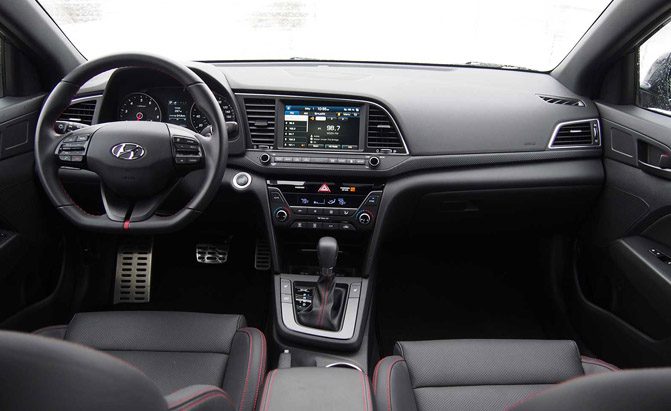2018 Hyundai Elantra Pros and Cons
The Hyundai Elantra has grown into a huge player in the compact car market — it’s no longer just the budget choice and is up there in quality with the very best in its segment.
Hyundai’s current-generation Elantra has been on the market for two years now and sales have remained healthy for this competent vehicle and strong Honda Civic competitor. The 2018 model year brings no significant changes except for some minor trim reshuffling, which is fine because it was already so well-rounded and refined, serving as a solid option for people looking for a compact car.
“The new Elantra feels confident and refined in a way that few other compacts can compete with,” said Sami Haj-Assaad of AutoGuide.com in his full review of the Elantra. Here are the pros and cons of this car:
ALSO SEE: Hyundai Elantra Review
2018 Hyundai Elantra Pros and Cons
Pros
Smart Looks: The Elantra has a clean, confident, and smart design, though some think it’s too conservative. The sedan gets gorgeous headlight treatments that are even further accentuated by the available HID option.
Inside follows suit, as the dashboard has a logical and fuss-free arrangement with critical user controls placed intuitively and adorned with tasteful-looking materials that are appropriate for the class of vehicle. The interior might look a bit drab in terms of colors and flourish, but it still manages to feels upscale.
Value-Oriented Equipment Packaging: Moving up one rung above the base SE trim to the SEL affords you features such as blind spot detection, rear cross-traffic alert, and lane change assist, auto headlights, and a vivid looking 7-inch touchscreen with Android Auto and Apple CarPlay.
Moving even further up adds a hands-free smart trunk, proximity key entry, and a leather-wrapped steering wheel, and shift knob. All this rings in at under $21,000 including destination for the above-mentioned trims.

Respectable Driving Dynamics: Hyundai did not saddle the Elantra with a dull personality but rather gave it a nice steering feel and a smooth ride. Hyundai revised steering ratios for this generation to make it heavier and more communicative.
Despite lacking a multilink rear suspension in trims lower than the Sport, the torsion beam setup does an admirable job cushioning harsh bumps and undulations at any speed.
Multiple Variants: The Elantra comes in many different flavors, making it easy to pick a model that suits your personality or needs. In terms of body styles, there’s a sedan and a GT hatchback model, and the Elantra Sport variant livens things up with engaging driving dynamics and a snarly sound that enthusiasts will enjoy. The Eco model should attract the environmentally conscious and that particular trim even comes with a sporty 7-speed dual clutch transmission.
Cons
Underwhelming Standard Powertrain Figures: The Elantra with the standard 2.0-liter four-cylinder would benefit from a bit more grunt. Its 147 horsepower and 132 pound-feet of torque move the vehicle competently, but we wish there was a bit more power to liven things up particularly in a field where competitors are often turbocharged with horsepower figures above 170 horsepower.
Luckily, the 1.4-liter four-cylinder turbo found in the Eco model has a higher torque rating at 156 pound-feet of torque, which should move the Elantra with more gusto.
Average Interior Space: In terms of rear seat passenger space, the Elantra’s 35.7 inches of legroom ranks as one of the lowest in the segment where competitors such as the Toyota Corolla come with almost 42 inches of legroom in the back.
Discuss this article on our Hyundai Forum